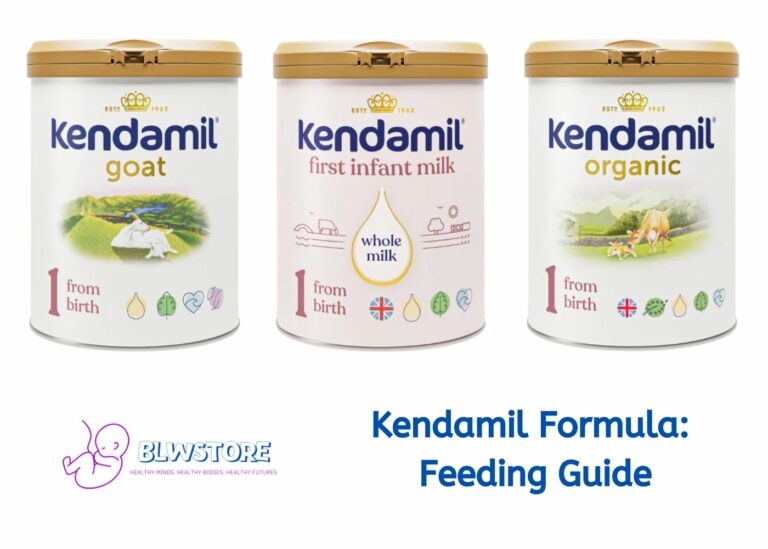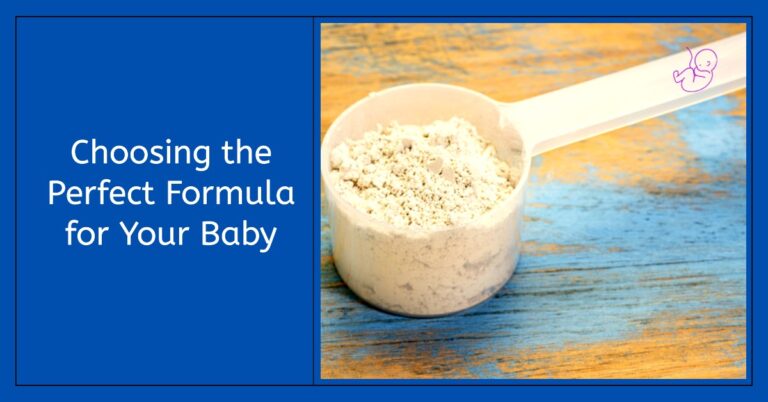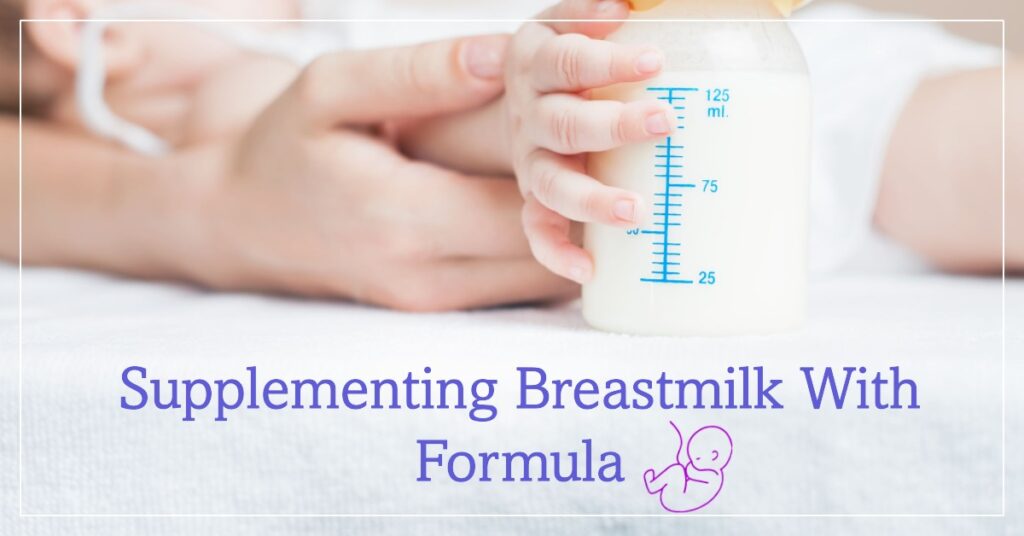
Key Takeaways
Around 36% of breastfed babies receive supplemental formula before reaching six months. This can provide additional nutrition and alleviate parental stress.
Combining formula and breast milk in one bottle is simpler. Follow the guidelines for proper breast milk storage (see below) and formula preparation.
Reasons for supplementing with formula can include medical issues, low breast milk supply, returning to work, partner involvement, having multiples, or personal choice.
Introduce formula gradually, starting with one or two daily bottles alongside breastfeeding. Monitor your baby’s reactions to the formula.
Pumping or hand-expressing breast milk is vital to maintain your milk supply when supplementing with formula.
Formula supplementation may affect your milk supply and alter the breastfeeding schedule. Maintain regular nursing or pumping and consult professionals for guidance.
Transitioning from breastfeeding to bottle feeding requires patience. Your baby’s bowel movements may also change due to formula.
Remember, each baby is unique. If you have questions or concerns, don’t hesitate to consult healthcare providers or lactation consultants.
Are you a new parent struggling to juggle your baby’s needs with your own?
You’re not alone.
Approximately 36% of breastfed babies receive supplemental formula before they reach six months old.
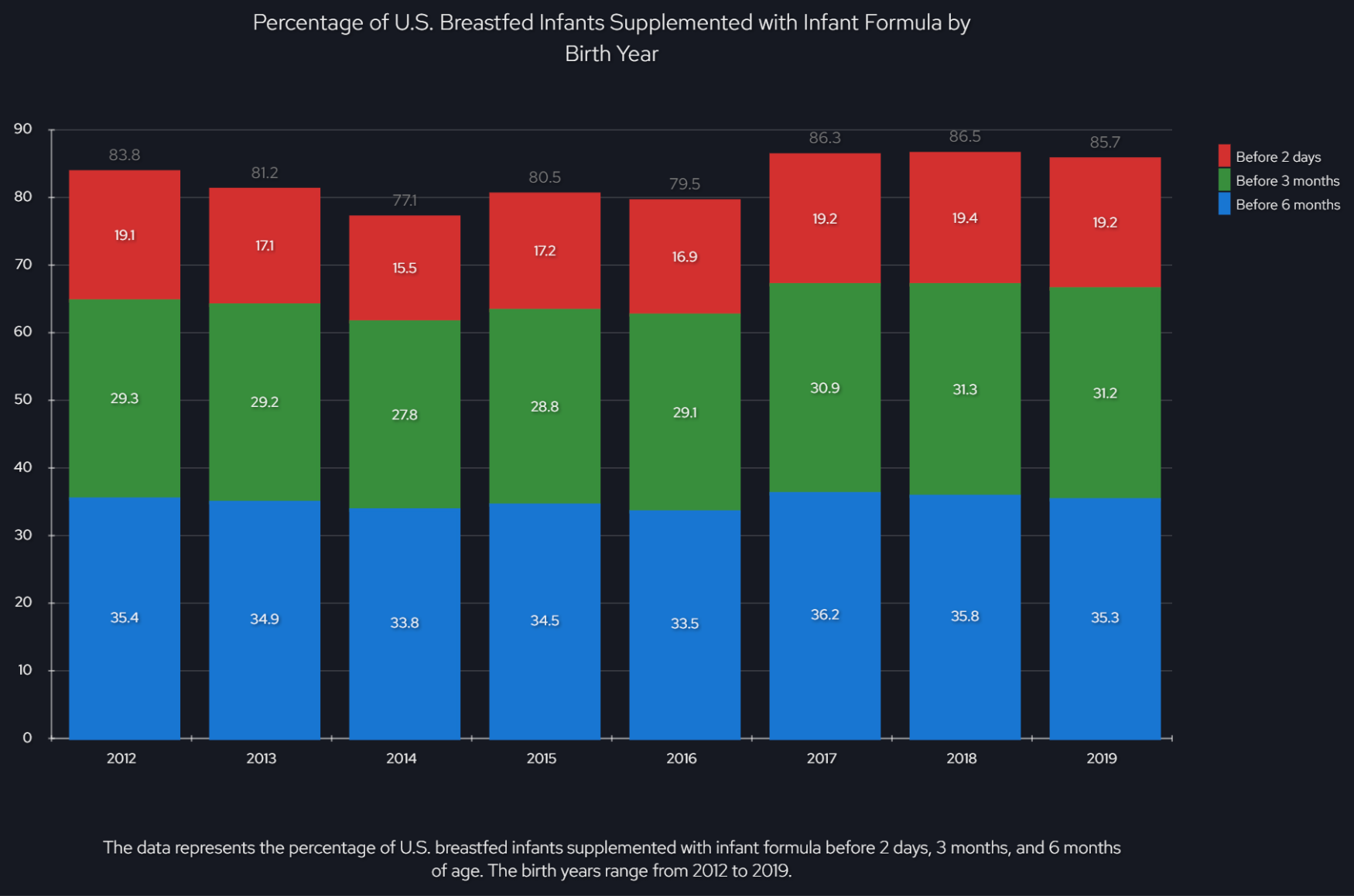
Our article outlines how supplementing breastfeeding with formula and mixing both in one bottle can help provide extra nutrition for some babies, easing parental stress.
Let’s get after it!
*Related: How to switch from breast milk to formula
Our short answer and experience
Maria started breastfeeding from the beginning, and it lasted until our son Pablo was about 2 years old.
During those two years, we had to supplement with formula on many occasions, for various reasons, and it’s easier than it sounds.
Simply prepare the formula correctly and mix it with freshly expressed or properly thawed breast milk. Below is how to store breast milk properly.
As always, be patient, try to follow a routine and be consistent.
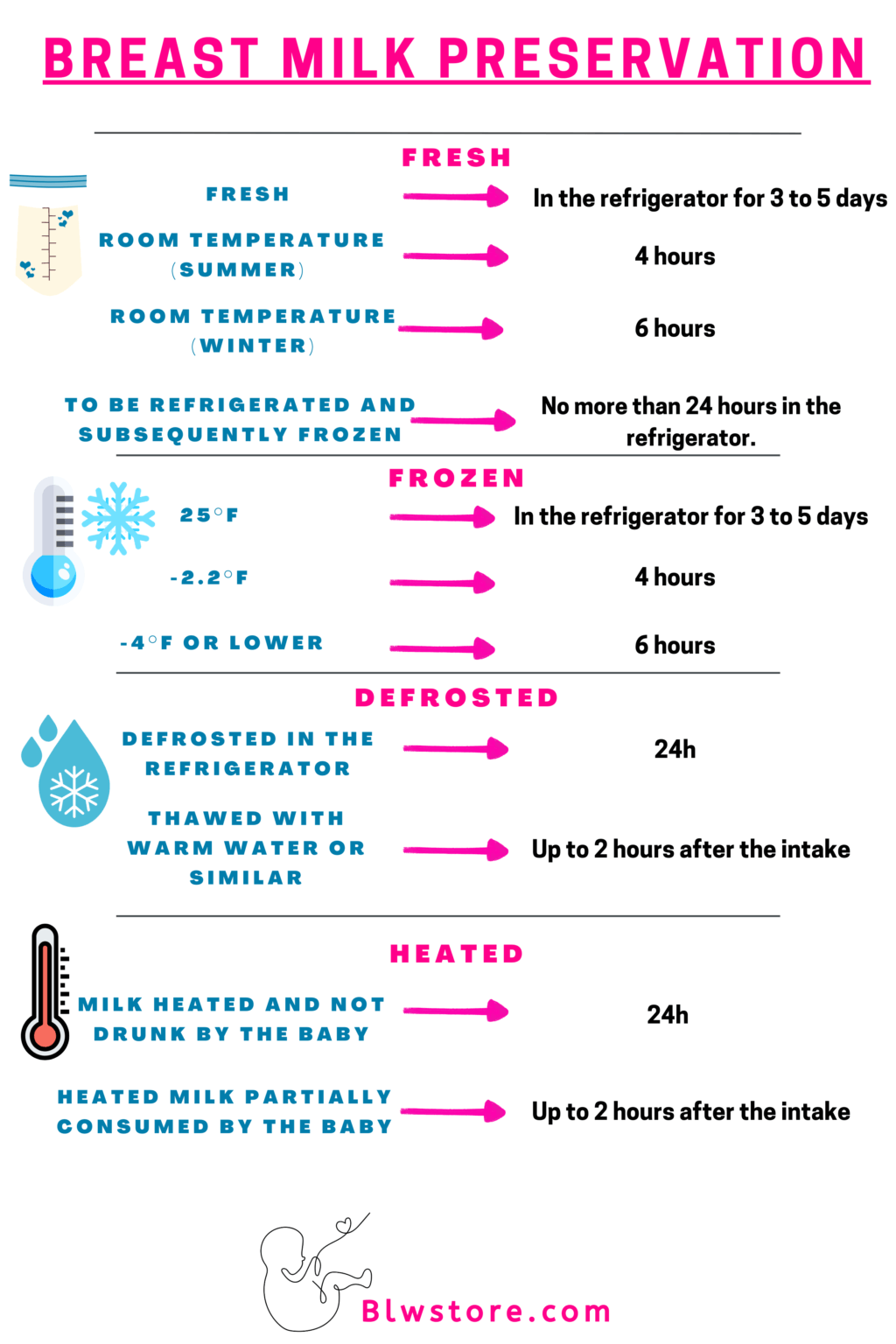
Reasons for Supplementing with Formula While Breastfeeding
Reasons for supplementing with formula include medical issues for the child (e.g., jaundice), low breast milk supply, returning to work, partner involvement, having multiples, and personal choice for flexibility in feeding schedule.
1. Medical issues for the child
A condition like jaundice can be improved by giving the baby extra fluids from formula feeding.
A significant weight loss after birth might also prompt healthcare providers to suggest supplementation as it aids in faster weight gain.
2. Low breast milk supply
If you’re experiencing low breast milk supply, supplementing with formula can be a helpful solution. It’s important to remember that any amount of breast milk is beneficial for your baby, and it’s perfectly acceptable to supplement if necessary.
Low breast milk supply can be caused by various factors such as hormonal imbalances, certain medications, stress levels, or medical conditions.
Don’t blame yourself for not producing enough milk; Maria has been there – it doesn’t mean you’re not a good mom.
3. Returning to work
Many new parents return to work after a few weeks or months of being home with their baby.
This transition can sometimes make it challenging to breastfeed exclusively, as it may be difficult to pump enough milk during working hours.
4. Partner’s involvement
Breastfeeding is a team effort; getting your partner involved can make the process smoother.
Your partner can help with bottle feeding when you supplement with formula, giving you some much-needed rest or allowing you to focus on other tasks.
They can also assist in preparing bottles by mixing breast milk with formula according to the recommended guidelines (see below)
5. Multiples
Having multiples, such as twins or triplets, can present unique challenges when it comes to breastfeeding.
While some parents can exclusively breastfeed their babies, others may find that supplementing with formula is necessary to ensure all their little ones get enough nourishment.
This can be especially true when there is a low breast milk supply or if the babies have increased nutritional needs due to being premature or having medical issues.
6. Personal choice
Some parents supplement with formula while breastfeeding simply because they want to.
It’s a personal choice that gives them more flexibility and control over their baby’s feeding schedule.
How to introduce formula and mix it with breast milk
1. Starting with one or two formula bottles a day
Begin by offering one or two formula bottles a day alongside breastfeeding sessions.
Gradually introduce the formula bottles over several days to allow your baby to adjust.
Start with small amounts of formula, such as 2-4 ounces per bottle, and increase gradually as needed.
Offer the formula bottles at consistent times each day to establish a routine.
Observe your baby’s reactions and monitor for signs of discomfort or intolerance to the formula.
Remember that breast milk will still be your baby’s primary source of nutrition during this transition period.
It’s important to continue breastfeeding on demand to maintain your milk supply while supplementing with formula.
2. Adding more formula gradually
Begin with a small amount of formula, such as 2-4 ounces, and gradually increase the quantity over time.
Continue increasing the amount if they tolerate it well and show no signs of discomfort or allergy.
Consider pumping or hand-expressing milk between feedings to help maintain your milk supply while introducing more formula.
Monitor your baby’s weight gain, diaper output, and overall well-being as you introduce more formula into their diet.
Consult with a lactation consultant or healthcare provider if you have any concerns about mixing breast milk with formula or need guidance.
3. Pumping or hand-expressing
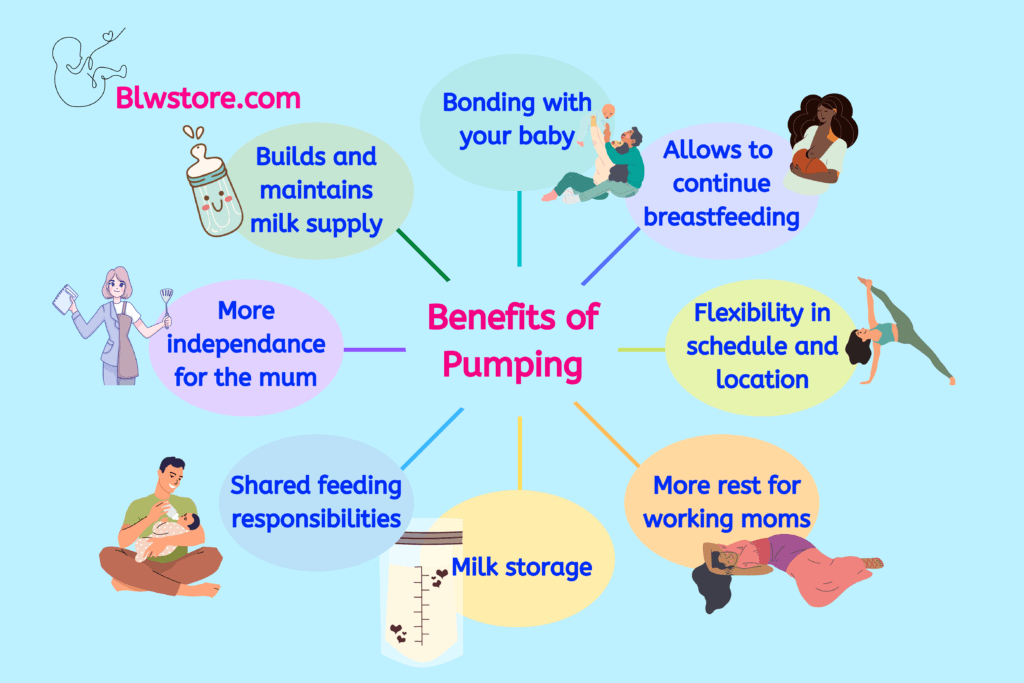
Pumping or hand-expressing breast milk becomes an important step.
By using a breast pump or manually expressing milk, you can maintain your milk supply and ensure that your baby still receives the benefits of breast milk.
How Supplementing with Formula Affects You
1. Changes in breastfeeding schedule
You may need to breastfeed less frequently or for shorter durations.
Adding formula bottles can help spread out feedings and relieve sore nipples.
Your baby’s appetite and feeding pattern may change when introducing formula.
You might need to pump breast milk when you would have breastfed exclusively.
Consistency and establishing a routine are key when adjusting the breastfeeding schedule.
2. Impact on milk supply
Supplementing with formula while breastfeeding can potentially impact your milk supply.
Introducing formula signals to your body that less milk is needed, which may cause a decrease in production.
Additionally, if you’re not breastfeeding or pumping as often as before, it could further affect your supply.
It’s important to remember that every woman’s experience is different, and some may notice a significant drop in supply while others may not.
However, if maintaining your milk supply is your priority, it’s crucial to continue frequent nursing or pumping sessions and seek support from lactation consultants or healthcare professionals who can guide how to manage the transition effectively.
How Supplementing with Formula Affects Your Baby
1. Transitioning to the bottle
Transitioning your baby from breastfeeding to bottle feeding can be a gradual process that requires patience and flexibility.
It’s important to introduce the bottle in a way that feels comfortable for you and your little one.
Like we said before, start by offering one or two formula bottles a day, alongside breastfeeding sessions, to allow your baby to get used to the taste and feel of the bottle.
As they become more accustomed to it, gradually add more formula bottles while reducing the number of breastfeeding sessions.
2. Changes in bowel movements
The composition of breast milk and formula is different, resulting in stool consistency, color, and frequency variations.
Breastfed babies tend to have seedy, yellowish stools that may resemble mustard. However, you may notice changes such as firmer stools or a darker color when introducing formula or combining it with breast milk.
These differences are generally normal and not a cause for concern.
FAQs
1. When is it necessary to supplement breastfeeding with formula?
Supplementing with formula may be necessary when a baby is not gaining enough weight, does not have enough wet or dirty diapers, or if the mother’s milk supply is insufficient to meet the baby’s needs.
2. How do I mix breast milk with formula?
To mix breast milk with formula, start by preparing the formula according to the manufacturer’s instructions. Once prepared, gently warm the bottle of breast milk and then combine it with the prepared formula in a clean bottle. Shake well to ensure proper mixing before feeding.
3. Can mixing breast milk with formula affect my baby’s digestion?
Mixing breast milk with formula should not significantly impact your baby’s digestion.
However, every baby is different; some may experience slight changes in their stools or gas patterns when introduced to mixed feeding.
4. Is there a specific ratio for mixing breast milk and formula together?
There isn’t a specific ratio for mixing breast milk and formula, as it depends on individual circumstances and preferences.
Some parents gradually increase the amount of formula while decreasing breastfeeding sessions over time, while others prefer a combination of both at each feeding session.
We’re Maria and Alberto, a married couple and educators who are nutrition enthusiasts. Even before we had kids, we were already crazy about nutrition.
We’d read scientific articles, watch videos from nutritionists, and spend hours listening to nutrition podcasts.
Today, we continue doing this, but in a different way, as we’ve learned to sift through the noise and trends. Nutrition, like any other field of knowledge, the more you read and learn, the more you develop a comprehensive understanding of reality, and that’s what has happened to us.
Before having our first child, we focused on learning everything we could about child nutrition, using the same techniques we had already employed, backed by our extensive knowledge in nutrition.
Our mission is to help other parents with their children’s nutrition, to help them become the best versions of themselves.
If we are what we eat and drink, which is absolutely true, let’s do it right!


